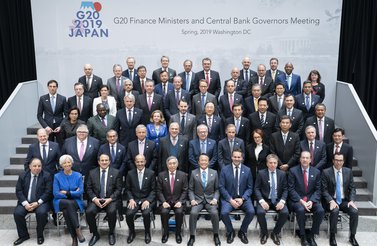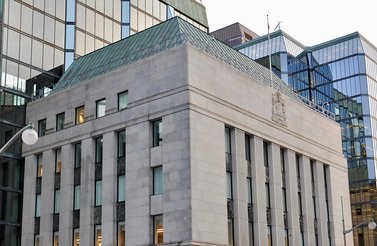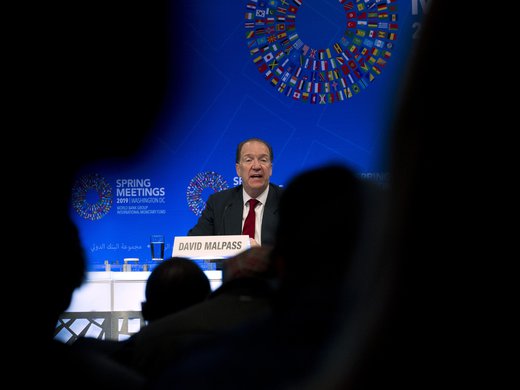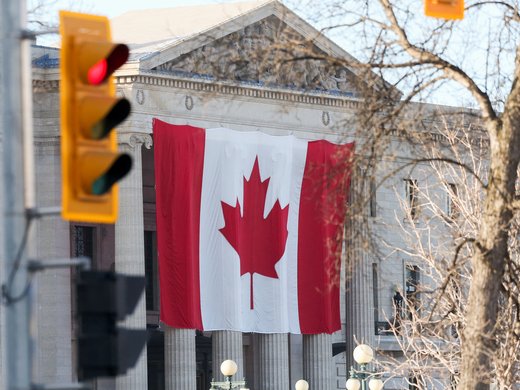Last week, the Bank of Canada left interest rates unchanged, a decision that surprised no one. And yet, it still felt remarkable, given the unemployment rate — 5.5 percent — has rarely been lower. Days later, some experts were still struggling to reconcile the reality of the central bank’s position with data that suggests policy makers should be worried about inflation.
“Markets had completely priced this in, but nevertheless, there are reasons to be surprised by this decision, and perhaps even consider it a missed opportunity,” Steve Ambler and Jeremy Kronick of the C. D. Howe Institute wrote in The Globe and Mail. The labour market, they noted, appears to be “quite strong.”
Statistics Canada’s monthly Labour Force Survey (LFS) goes back to January 1976, when the unemployment rate was 7.1 percent.
The earliest days of the LFS appeared to represent the best of times for Canadian workers. That first year, the jobless rate dropped below seven percent in March, April, May and June before popping to 7.4 percent in July, the same month Montreal hosted the 1976 Summer Olympics. The unemployment rate wouldn’t go below seven percent again until November 1999, after peaking at 12.1 percent five years earlier.
Canada’s economy started to roll at the end of the 1990s as the free trade agreement with the United States, stable inflation, lower interest rates and higher commodity prices combined to create an impressive tailwind. The unemployment rate dropped below six percent for the first time in August 2007 and would stay there for four of the next six months.
Then Lehman Brothers collapsed in the autumn of 2008, triggering a financial crisis in the United States and Europe that brought the Great Recession. The world is still coping with the effects of that catastrophe more than a decade later. In Canada, the legacy of the crisis is expressed in household debt and elevated real-estate prices in the country’s biggest cities. Bloomberg Economics estimates that no country is at greater risk of a housing bust.
Still, you wouldn’t know there was anything wrong with the Canadian economy by looking at the LFS. The most recent reading shows the unemployment rate increased in June, but from the lowest level on record: the jobless rate now is 5.5 percent, compared with 5.4 percent in May. With two exceptions, the rate has been below six percent every month since December 2017, and hasn’t touched that mark since August 2018.
Going by the LFS, Canada’s labour market has never been better. But the central bank isn’t convinced. The jobless rate is firmly in a zone that policy makers associate with “full employment,” the state at which every easily employable person who wants a job can find one. That suggests inflation pressures are building, as a hot labour market typically is associated with stronger demand and higher prices.
Yet the Bank of Canada opted to leave its benchmark interest rate unchanged at 1.75 percent, a low level by historical standards.
The main reason for doing so was concern over how US President Donald Trump’s trade wars appear to be constraining global demand and business investment. The Reserve Bank of Australia cut interest rates twice in a month, and the US Federal Reserve and the European Central Bank are contemplating cuts of their own. The Canadian central bank’s response was to plant itself firmly in neutral. It published the results of research that showed the potential pain from an escalation of the US-China trade conflict is much bigger than the economic gains that would follow an easing of tensions. That’s an argument for proceeding cautiously until the Trump administration and Chinese President Xi Jinping resolve their differences.
But the motivation behind the Bank of Canada’s decision isn’t quite as simple as trade. It also reflects a shift in how central banks process hiring data. Jobless rates in the United States, Europe and Canada plunged over the last couple of years without putting any significant upward pressure on inflation, which all their institutions target. That has forced policy makers to dig deeper in order to get a better understanding of what is going on in the labour market. They have come to realize that the unemployment rate is an imperfect representation of the state of their economies.
After the Bank of Canada released its latest policy decision, Carolyn Wilkins, the senior deputy governor, described the labour market as “very healthy.” But she disagreed with the suggestion that hiring was on fire. Companies report that they are struggling to fill positions, which implies a tight labour market that will put upward pressure on wages and inflation. However, a closer inspection shows that current labour shortages aren’t “necessarily notable” when put against historical norms, Wilkins said.
“So ‘on fire’ might be a strong word and certainly there are pockets in the country where people wouldn’t say it was on fire at all,” Wilkins said at a press conference. “In fact, they’d say the opposite.”
Jerome Powell, the Fed chairman, said something similar last week.
The US jobless rate was 3.7 percent in June, one of the lowest levels in 50 years. Nonetheless, Powell told the House Financial Services Committee on July 10 that “we don’t have any evidence for calling this a hot labor market,” Reuters reported. Citing lacklustre wage growth, Powell added that “to call something hot we need to see some heat.”
Both The New York Times and The Wall Street Journal described Powell’s remarks as an official embrace of a new way of thinking about the labour market. Janet Yellen, the previous Fed chair, introduced a “dashboard” of hiring indicators that she used to bolster her case that the unemployment rate could fall lower without triggering inflation. More recently, officials have come to accept that their conceptions of what constituted full employment were probably wrong. “The unemployment rate lately has falsely signaled that maximum employment was near, even though millions more jobless people still wanted work,” Neel Kashkari, president of the Federal Reserve Bank of Minneapolis, said in an op-ed published in The Wall Street Journal in May.
Demographics are probably a factor. In Canada, men and women aged 25 to 54 represented about 64 percent of total employment in June, compared with percentages of around 70 percent on the eve of the financial crisis. A labour market populated by a greater number of older and younger workers will behave differently than one that is dominated by men and women who are mid-career.
Whatever the reason, central banks appear to have decided the relationship between employment and inflation is more nuanced than following the jobless rate. And as long as inflation is muted, they seem willing to test the boundaries.
The notion of full employment and other concepts that central banks use as guides are like “dark matter,” Wilkins said in an interview in Calgary in May.
“You know they’re there, but you can’t really see it, and so to some extent you need to feel your way,” she said.





